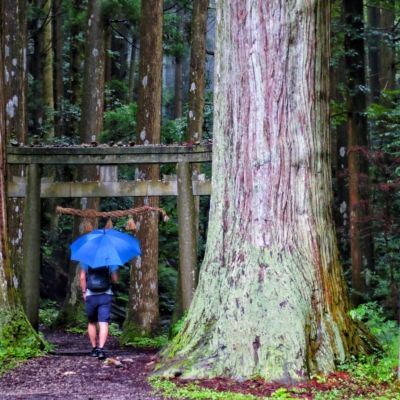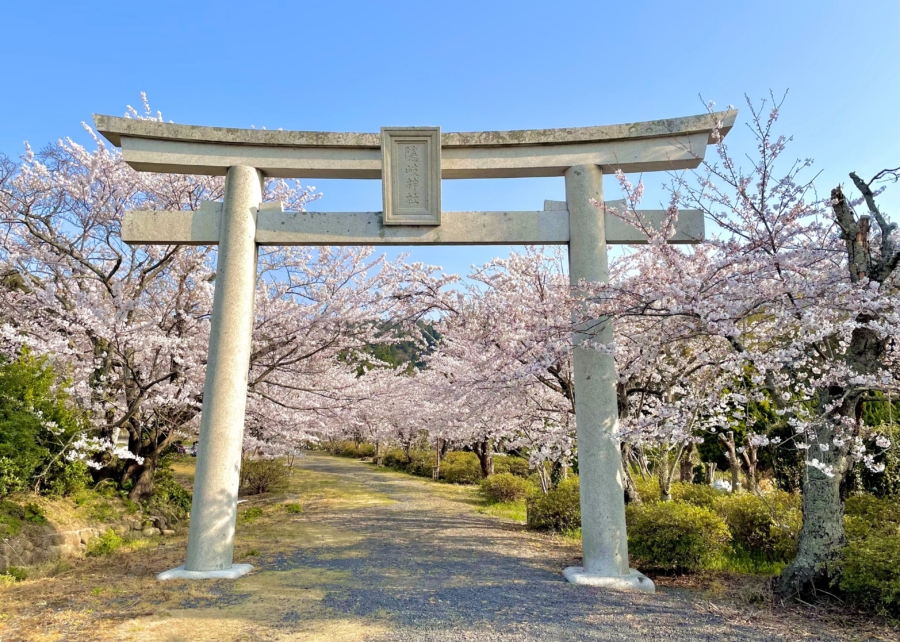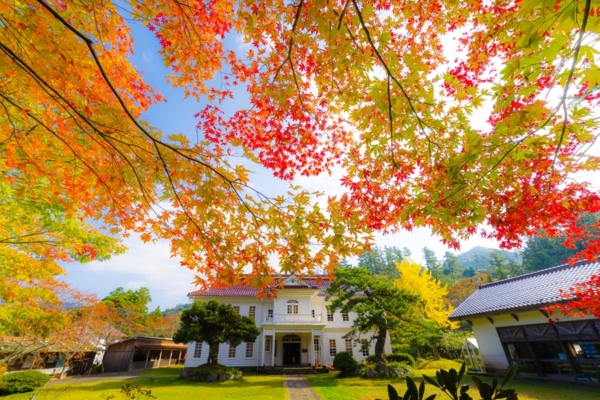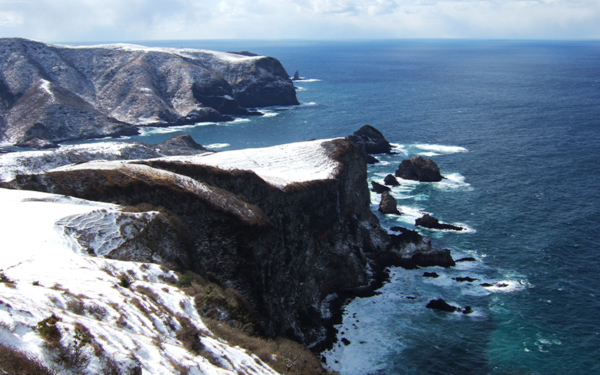Check the Weather Forecast
Check the weather forecast before your trip. The Oki Islands depend on ferries as their main mode of transport and shipment of goods. Weather events, especially strong winds, and rough seas affect the daily lives of the residents. To predict the sailing status of the ferries in the upcoming days, the islanders are very used to checking the wind and waves forecast regularly. All visitors are strongly advised to do the same before and during their trip.
The typhoon season in Japan is from May to October. The peak season is in September and October. Occasionally the typhoons hit the islands directly. Typhoons bring heavy rain, reduced visibility on land and at sea, strong winds and high waves to the islands. For safety measures, the ferries, fast ferry Rainbow Jet and the inter-island ferries will not operate in adverse weather.
Visitors are advised to check the weather and waves forecast (we recommend the Japan Meteorological Agency and Windy.com, which has a downloadable smartphone app!) regularly and make changes to your itinerary when necessary so you will not be stranded on the islands and become a no-show at the next hotel or even miss your flight home.

The winter months are a hit or miss when it comes to travelling to the Oki Islands. Days with beautiful, clear weather are mixed with cold spells, characterised by strong winds, high waves, and snowfall. This affects the transport network in the region, and ferries might be cancelled. It is always prudent to be up-to-date with the weather reports when planning a visit to the Oki Islands, and especially so when visiting in the winter months.
Annual Temperatures and Daylight
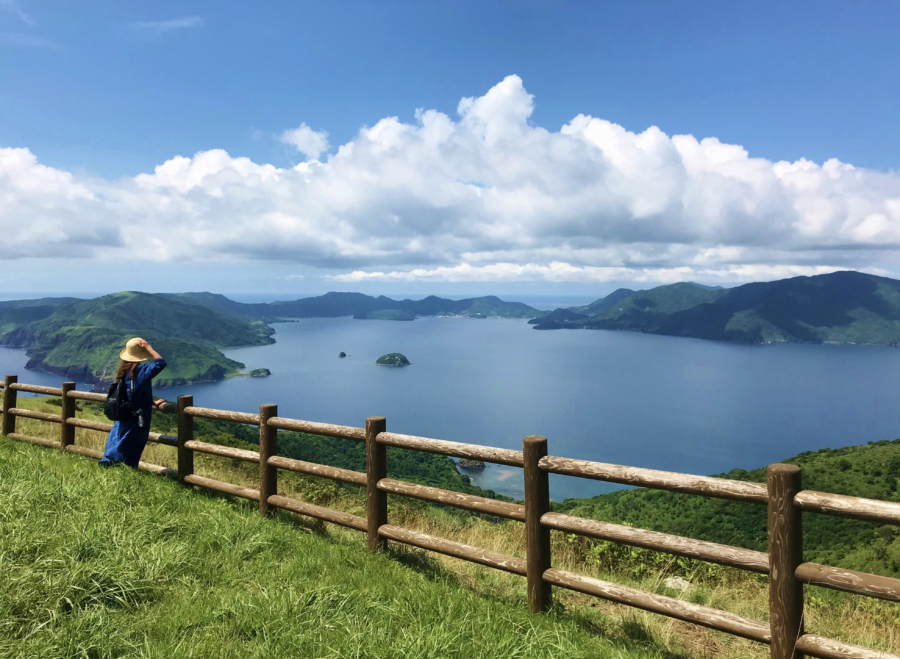
Annual Temperatures (°C/°F)
| Jan | Feb | Mar | Apr | May | Jun | Jul | Aug | Sep | Oct | Nov | Dec | |
| Average Daily Max. Temperature | 7.8/46 | 8.2/48.8 | 11.3/52.3 | 16.6/61.9 | 20.8/69.4 | 24.1/75.4 | 27.6/81.7 | 29.8/85.6 | 25.9/78.6 | 21.1/70.0 | 15.9/60.6 | 10.9/51.6 |
| Average Daily Temperature | 4.2/39.6 | 4.3/39.7 | 6.9/44.4 | 11.9/53.4 | 16.3/61.3 | 20.1/68.2 | 24.2/75.6 | 26.0/78.8 | 22.0/71.6 | 16.5/61.7 | 11.6/52.9 | 7.1/44.8 |
| Average Daily Min. Temperature | 0.9/33.6 | 0.6/33.1 | 2.4/36.3 | 6.9/44.4 | 11.8/53.2 | 16.5/61.7 | 21.4/70.5 | 22.8/73.0 | 18.4/65.1 | 12.1/53.8 | 7.4/45.3 | 3.4/38.1 |
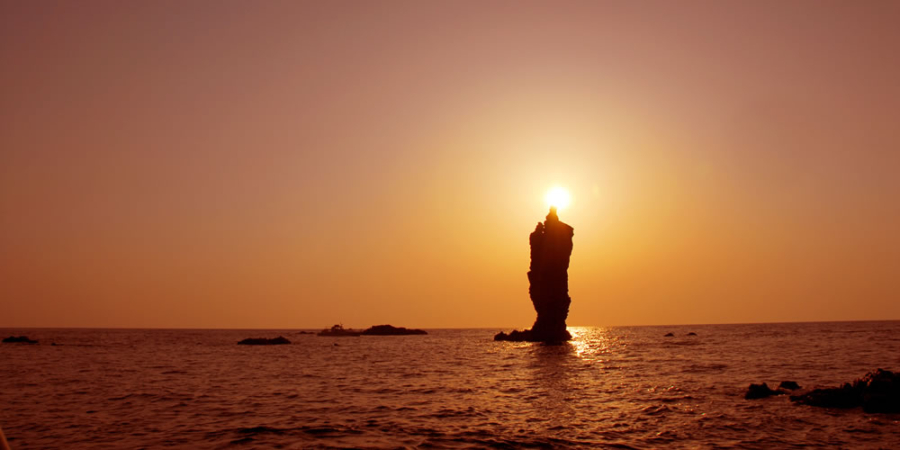
Sunrise & Sunset
| Jan | Feb | Mar | Apr | May | Jun | Jul | Aug | Sep | Oct | Nov | Dec | |
| Sunrise | 7:20 | 7:10 | 6:40 | 5:50 | 5:15 | 4:50 | 4:55 | 5:15 | 5:40 | 6:00 | 6:30 | 7:00 |
| Sunset | 5:00 | 5:35 | 6:00 | 6:30 | 6:55 | 7:20 | 7:30 | 7:15 | 6:35 | 5:50 | 5:10 | 4:50 |
*Times above are for the beginning of each month. Refer to the daily weather report for detailed information about a specific day. For the best view, arrive a little early.
Four Seasons on the Oki Islands
Spring (March to May)
During March, April and May, the temperature gradually rises during the day. But the nights can still be quite chilly, so you are advised to bring long-sleeved shirts or a light jacket. The cherry blossom season in Oki is from late March to early April, and other beautiful endemic flowers such as Oki Rhododendron can be seen in May. Spring is also the time for some natural wonders such as the Kannon-iwa Rock lit by the setting sun at Kuniga Coast of Nishinoshima Town.
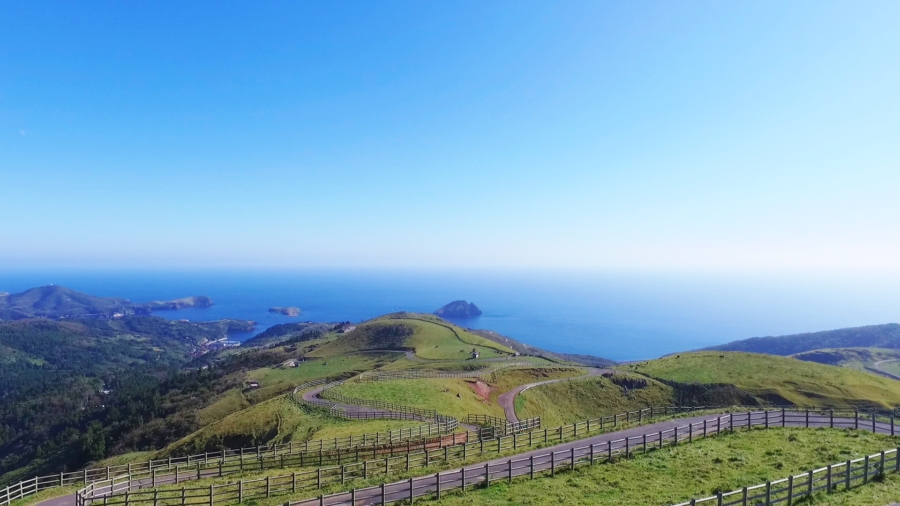
Summer (June to August)
June, July and August are the warmest months in Oki. With the campgrounds and swimming beaches open, summer is also the perfect time to enjoy marine sports on the islands. Make sure to bring your goggles, swimsuit, marine shoes and sunscreen. Don’t forget your umbrella and rain gear too!
Please be reminded that most of the hiking trails are not covered by trees, and there are a very limited number of pavilions along the trails. Make sure you protect yourself from the sunlight. Do not venture into the mountains when an advisory for thunderstorms or heavy rain has been issued.
Autumn (September to November)
It is still quite warm during the daytime in September and October, but it starts to get chilly at night, so you are advised to bring warmer clothing.
Keep an eye out on hornets (known as suzume-bachi in Japanese) and paper wasps (known as ashinaga-bachi) when you are out hiking, as these insects are most aggressive in autumn. For more information on those, see p. 25-26 of the Pocket Guide to Outdoor Activities in the Oki Islands.
Winter (December to February)
January and February are generally the coldest months on the islands, with an average temperature around 5℃. The islands are slightly warmer than the rest of Shimane Prefecture and have comparatively less snowfall (snowfall varies on the islands). However, the strong northwesterly winds from the continent cause rough seas, which leads to the cancellation of ferry services. With some of the facilities closed and the suspension of the Rainbow Jet fast ferry, winter is not the perfect time to visit the islands.
Useful Links
Check out our Pocket Guide to Outdoor Activities in the Oki Islands for more information on the hiking trails, hiking and water sports essentials, tips on how to protect yourselves from wasps and more. Printed copies of the pocket guide are available at the tourism association counters on all four islands.
You can also visit the homepage of Oki Kisen Ferry LineThis will open in a new tab. for wave forecasts and the most updated information on ferry crossings. Also check out our collection of ferry-related information in the Travel Tips to Know section!

